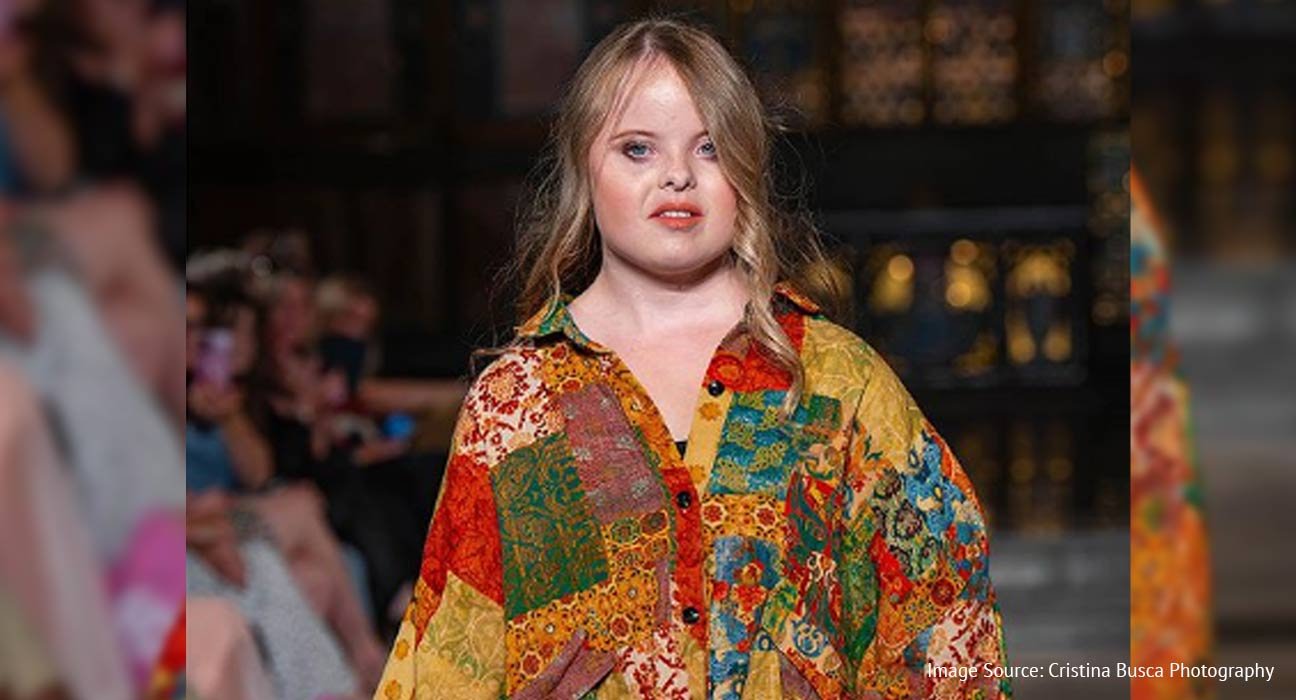One of the very rare individuals with a Down syndrome diagnosis to walk in an international fashion event is Beth Matthews, 23, from Swansea.
A person with Down syndrome or trisomy 21 possesses an extra chromosome or portion of a chromosome, namely an additional copy of chromosome 21. This extra copy affects how a baby’s body and brain develop. Their physical and mental health may suffer for the rest of their lives as a result. Even while some individuals with Down syndrome may act and appear identical; each one has unique skills.
About 47,000 people in the UK have this condition. Beth was motivated to pursue modeling as a career after watching the work of Ellie Goldstein, a Gucci model who also has Down syndrome. “She wants to change the face of fashion,” said Beth.
Hurdles as a Down Syndrome Model:
Beth’s mother, Fiona said, “Beth’s increasing self-assurance has helped her discover who she is. Her mother continued, “Everyone makes fun of me and refers to me as her “momager,” but what we’re really trying to do is use Beth’s work to support other parents. Perhaps parents of young children can be a little more upbeat about the future and it can alter people’s perceptions of persons with Down’s syndrome by demonstrating that someone like Beth has an amazing life. It’s trying to get across that her life isn’t any different from most people’s lives.”
According to Fiona, “The medical community gave us such a bad start by being so pessimistic about the kind of lives we were all going to lead, and I think it’s really important they stop sending that message.”
She claimed that while she and Beth were aware that the industry was not going to change overnight, they nevertheless wanted to move it “simply an inch” in order to provide room for others. According to Beth and her mother, “The landscape is shifting. Everyone has the right to pursue their highest potential. No one is more or less deserving than the other.”
Symptoms of Down Syndrome:
Each person has a unique set of Down syndrome signs and symptoms. Additionally, individuals with Down syndrome could experience various issues at various stages of their lives. The intellectual limitations they often have are mild to moderate. Their growth is frequently delayed.
Some of the physical symptoms of Down syndrome are as follows:
- Flat face.
- Upwardly slanted eyes.
- A compact neck.
- Little feet and hands.
- Muscle tone concerns.
- Joint slack.
Treatment for Down Syndrome:
There isn’t a single, widely acknowledged treatment for people with Down syndrome. The best course of action is determined by the unique needs, abilities, and constraints of every patient.
Early intervention services have a focus on promoting the full development of children with Down syndrome. Physical, occupational, and speech therapy are all included in these programs. Additionally, there may be times when students with Down syndrome need extra help or attention in the classroom. These People require constant medical attention and medical care since they may have birth abnormalities and other health issues.
